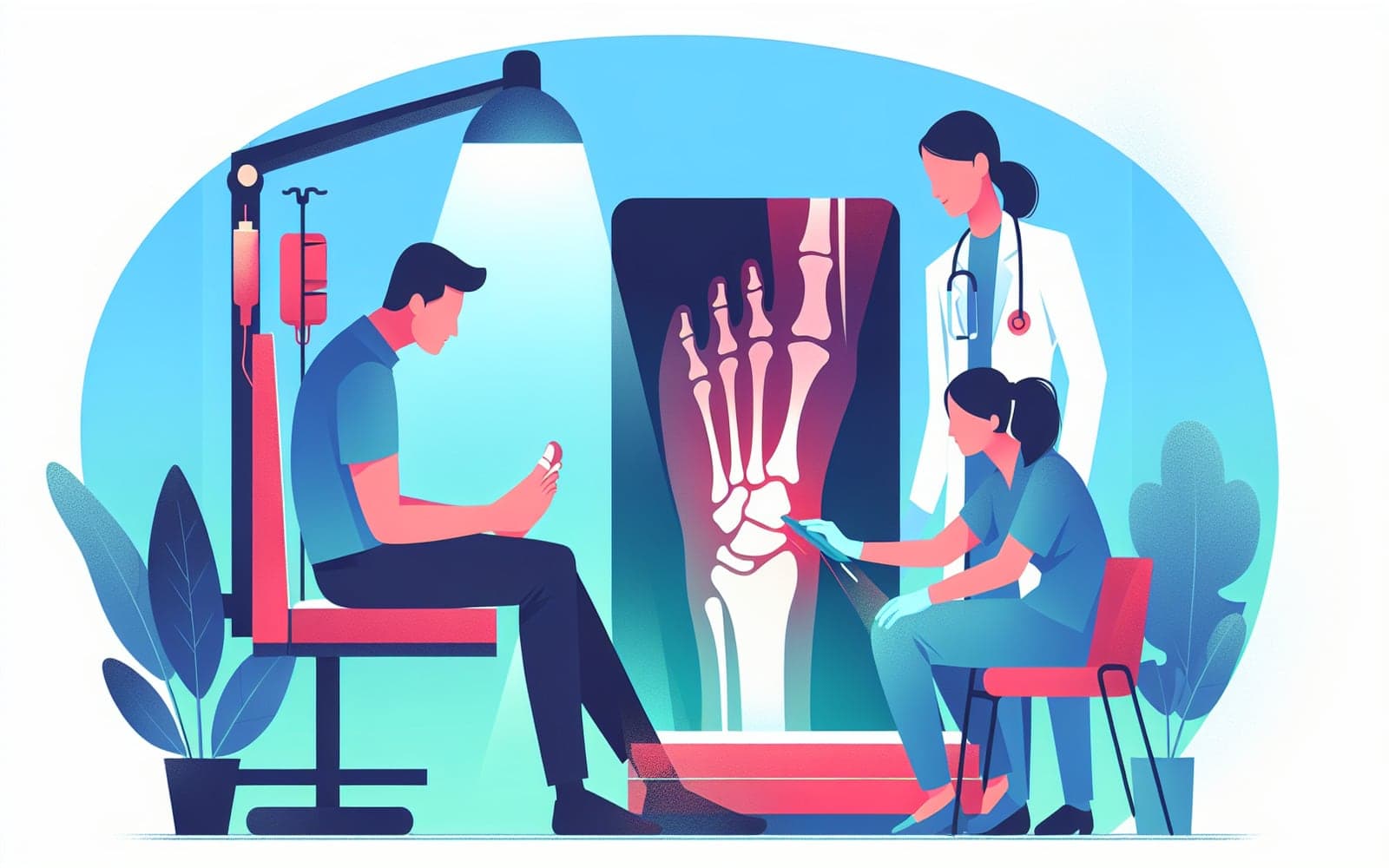Contents
-
The Power of X-rays
-
Ultrasound: A New Player in Fracture Detection
-
When More Detail is Needed
-
The Role of Clinical Examination
X-rays and Beyond: How Doctors Diagnose Toe Fractures
X-rays and Beyond: How Doctors Diagnose Toe Fractures
The Big Picture
Accurate diagnosis of toe fractures is crucial for proper treatment. While X-rays are the gold standard, newer technologies are expanding diagnostic capabilities.
Contents
-
The Power of X-rays
-
Ultrasound: A New Player in Fracture Detection
-
When More Detail is Needed
-
The Role of Clinical Examination
The Power of X-rays
X-rays are the primary tool for diagnosing toe fractures. They provide clear images of bone structures, allowing doctors to see the location and severity of the break. Typically, three views are taken: from the front (anteroposterior), side (lateral), and at an angle (oblique). These different angles help ensure that no fractures are missed, as some may only be visible from certain perspectives.
Ultrasound: A New Player in Fracture Detection
Point-of-care ultrasound is emerging as a valuable tool for diagnosing toe fractures. It can detect small fractures that may not be visible on X-rays. Ultrasound works by sending sound waves into the body and creating images from the echoes. It's particularly useful for detecting soft tissue injuries that often accompany fractures.
When More Detail is Needed
In complex cases, advanced imaging techniques may be used. CT scans provide detailed 3D images of bones and can reveal fractures that are difficult to see on X-rays. MRI scans are excellent for visualizing soft tissue injuries and can detect stress fractures early on, before they're visible on X-rays.
The Role of Clinical Examination
While imaging is crucial, a thorough clinical examination is equally important. Doctors will assess pain, swelling, deformity, and the ability to move the toe. They'll also check for signs of open fractures or damage to surrounding tissues. This hands-on assessment helps guide treatment decisions and ensures no injuries are overlooked.
FAQs
Are X-rays always necessary for toe fractures?
Generally yes, to confirm the diagnosis and guide treatment.
Can ultrasound replace X-rays for diagnosing toe fractures?
Ultrasound can complement X-rays but usually doesn't replace them.
How accurate are X-rays in diagnosing toe fractures?
X-rays are highly accurate but may miss some small fractures.
Are there risks associated with X-rays?
X-rays use very low doses of radiation; risks are minimal.
How soon after injury should imaging be done?
As soon as possible to ensure accurate diagnosis and treatment.
The Bottom Line
Accurate diagnosis of toe fractures relies on a combination of clinical examination and appropriate imaging techniques.
Additional References
-
Hoffman DF, Adams E, Bianchi S. Ultrasonography of fractures in sports medicine. Br J Sports Med 2015; 49:152.
-
Yesilaras M, Aksay E, Atilla OD, et al. The accuracy of bedside ultrasonography as a diagnostic tool for the fifth metatarsal fractures. Am J Emerg Med 2014; 32:171.
-
Kozaci N, Ay MO, Avci M, et al. The comparison of radiography and point-of-care ultrasonography in the diagnosis and management of metatarsal fractures. Injury 2017; 48:542.
This article has been reviewed for accuracy by one of the licensed medical doctors working for Doctronic.












